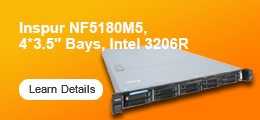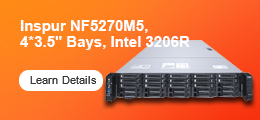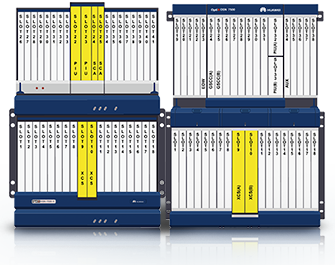Comprar por categorías
- Enrutadores
- Enrutadores AR G3
- Enrutadores de sucursal integrados empresariales
- Enrutadores de borde del proveedor de servicios
- Enrutador Cisco ASR 9000
- Serie Cisco ASR 5000
- Enrutadores Cisco 10000
- Enrutadores Cisco 12000
- Enrutadores Huawei NE05E/08E
- Enrutadores NetEngine 8000 de Huawei
- Enrutadores NetEngine20E-S de Huawei
- Enrutadores Huawei NetEngine40E
- Enrutadores NetEngine5000E de Huawei
- Enrutadores Juniper MX10003/MX10008/MX10016
- Enrutadores Juniper MX150
- Enrutadores Juniper MX2000
- Enrutadores Juniper MX204/MX240/MX480
- Plataformas de enrutamiento universal Juniper MX960 5G
- Enrutadores Juniper PTX1000/3000/5000/10000
- Puertas de enlace de servicio Juniper SRX
- Plataformas perimetrales de la serie Cisco Catalyst 8200 y uCPE
- Enrutadores para pequeñas empresas
- ISR de Cisco 1100
- ISR de Cisco 1800
- Cisco 2800 ISR
- Cisco 3800 ISR
- Cisco 800 ISR
- ISR de Cisco 900
- Enrutadores Cisco para vehículos recreativos
- Enrutadores empresariales Huawei AR100
- Enrutadores empresariales Huawei AR200
- Puertas de enlace ágiles Huawei AR530
- Pasarelas de control Huawei ME60
- Enrutadores empresariales Huawei NetEngine AR6000
- Plataformas Juniper CTP150 y CTP2000
- Paquetes de productos básicos de Juniper MX
- Enrutadores empresariales Ubiquiti
- Enrutadores perimetrales de Internet y agregación de WAN
- Enrutadores industriales
- Enrutadores Cisco
- Enrutador Cisco ISR 4000 hot
- Enrutador Cisco ISR 1900
- Enrutador Cisco ISR 2900
- Enrutador Cisco ISR 3900
- Enrutador Cisco ISR 1100
- Enrutador Cisco ISR 800
- Enrutador Cisco ISR 900
- Enrutador Cisco ASR 900
- Enrutador Cisco ASR 1000
- Plataformas perimetrales de la serie Cisco Catalyst 8200 y uCPE
- Enrutador Cisco ASR 5000
- Enrutador Cisco ASR 9000
- Enrutadores de la serie Cisco 8000
- Enrutador Cisco serie 10000
- Enrutador Cisco serie 12000
- Enrutador Cisco ISR 1800
- Enrutador Cisco ISR 2800
- Enrutador Cisco ISR 3800
- Enrutador Cisco serie 7200
- Enrutador Cisco serie 7600
- Enrutadores industriales de Cisco
- Módulos
- Cisco Catalyst 8000 Series Appliances
- Cisco Router NCS 6000
- Cisco Router NCS 5000
- Cisco Router NCS 4000
- Cisco Router NCS 2000
- Cisco Router NCS 1000
- Cisco Router NCS 540
- Cisco Gateway
- Cisco Routers CBR Series
- Enrutadores Huawei
- Enrutadores empresariales de la serie AR1200
- Enrutadores empresariales de la serie AR2200
- Enrutadores empresariales de la serie AR3200
- Enrutadores empresariales de la serie AR3600
- Enrutadores empresariales de la serie AR6000
- Enrutadores de la serie NetEngine de Huawei
- Enrutadores de servicio universal NetEngine 8000
- Enrutadores de servicio de gama media de la serie NE05E/08E
- Enrutadores de servicio universal de la serie NetEngine20E-S
- Enrutadores de servicio universal de la serie NetEngine40E
- Enrutadores de clúster NetEngine5000E
- Enrutadores de servicio universal de la serie NetEngine80E
- Software de enrutadores de la serie NE05E/08E
- Accesorios de enrutadores de la serie NE05E/08E
- Enrutador de servicio universal de la serie NE20E-X6
- NetEngine 8000 Universal
- Puertas de enlace de control multiservicio de Huawei
- Enrutadores empresariales de la serie AR100
- Enrutadores empresariales de la serie AR120
- Enrutadores empresariales de la serie AR150
- Enrutadores empresariales de la serie AR160
- Enrutadores empresariales de la serie AR200
- Puertas de enlace ágiles de la serie AR530
- Puertas de enlace ágiles de la serie AR550 de Huawei
- Puertas de enlace de IoT de informática perimetral de la serie AR502H de Huawei
- Enrutadores industriales de la serie AR502 de Huawei
- Puertas de enlace de IoT de la serie AR509 de Huawei
- Enrutadores empresariales de la serie AR600
- Enrutadores empresariales de la serie AR500
- Enrutadores de enebro
- Plataformas Juniper CTP150 y CTP2000
- Enrutadores Juniper MX10003/MX10008/MX10016
- Plataformas de enrutamiento universal Juniper MX2020 5G
- Plataformas de enrutamiento universal Juniper MX960 5G
- Enrutadores Juniper PTX1000/3000/5000/10000
- Enebro Otros enrutadores
- Tarjetas y módulos de enrutador Juniper
- Licencias de enrutador Juniper
- Servicios de enrutadores Juniper
- Accesorios para enrutadores Juniper
- Juniper PTX1000
- Enrutadores D-Link
- Enrutadores Ubiquiti
- Enrutadores Mikrotik
- Ruijie Routers
- H3C Routers
- Interruptores
- Centec Communications
- Interruptores de acceso
- Conmutadores Cisco Catalyst 9200
- Conmutadores Cisco Catalyst 9300
- Conmutadores Cisco Catalyst 9400
- Conmutadores Aruba 1820
- Conmutadores Aruba 1850
- Conmutadores Aruba 1920S
- Conmutadores Aruba 1950
- Conmutadores Aruba 2530
- Conmutadores Aruba 2540
- Conmutadores Aruba 2920
- Conmutadores Aruba 2930F
- Conmutadores Aruba 2930M
- Conmutadores Cisco Catalyst 2960
- Conmutadores compactos Cisco Catalyst
- Microinterruptores Cisco Catalyst
- Conmutadores Cisco Catalyst 3850
- Conmutadores Dell Networking N1500
- Conmutadores Dell Networking X
- Conmutadores HPE 1410
- Conmutadores HPE 1420
- Conmutadores HPE 1620
- Conmutadores HPE 1810
- Conmutadores HPE 2615
- Conmutadores HPE 2620
- Conmutadores HPE 2915
- Conmutadores HPE 3500 y 3500 yl
- Conmutadores Huawei S2300
- Conmutadores Huawei S3300
- Conmutadores Huawei S3700
- Conmutadores Ethernet Juniper EX2300
- Conmutadores Ethernet Juniper EX3400
- Conmutadores de acceso D-Link
- Dell EMC Networking PowerSwitch Serie N2200
- Dell EMC Networking PowerSwitch Serie N3200
- Serie Dell EMC PowerSwitch N1100
- Conmutadores de acceso H3C
- Conmutadores de acceso extremo
- Conmutadores SMB
- Conmutadores SMB de enlace D
- Conmutadores Aruba OfficeConnect
- Conmutadores Aruba Instant On 1930
- Switches no administrados Cisco Business serie 110
- Conmutadores no administrados Cisco 110
- Conmutadores inteligentes Cisco 200
- Conmutadores inteligentes Cisco 220
- Conmutadores administrados Cisco 300
- Conmutadores inteligentes Cisco 250
- Conmutadores administrados Cisco 350
- Switches administrados apilables Cisco 350X
- Switches administrados apilables Cisco 500
- Switches administrados apilables Cisco 550X
- Conmutadores Huawei S1700
- Conmutadores Huawei S2700
- Conmutadores empresariales Ubiquiti
- Conmutadores SMB extremos
- Conmutadores inteligentes Cisco Business serie 220
- Conmutadores administrados de la serie Cisco Business 350
- Conmutadores de convergencia
- Conmutadores empresariales Huawei S5700
- Conmutadores Ethernet Juniper EX4300
- Conmutadores Aruba 3810
- Conmutadores Aruba 5400R
- Conmutadores Cisco Catalyst 2960-X/XR
- Conmutadores Cisco Catalyst 3650
- Conmutadores Cisco Catalyst 3850
- Conmutadores Cisco Catalyst 2960
- Conmutadores Cisco Catalyst 3750
- Conmutadores Cisco Catalyst 4900
- Conmutadores Dell Networking N3000
- Conmutadores HPE 5500 HI
- Conmutadores HPE 5510 HI
- Conmutadores HPE FlexFabric 5700
- Conmutadores HPE FlexFabric 5800
- Conmutadores HPE FlexFabric 5900
- Conmutadores HPE FlexFabric 5930
- Conmutadores HPE FlexFabric 5940
- Conmutadores HPE FlexNetwork 5120 SI
- Conmutadores HPE FlexNetwork 5130 HI
- Conmutadores empresariales Huawei S6300
- Conmutadores Ethernet Juniper EX4600
- Conmutadores empresariales Huawei S5300
- Conmutadores empresariales Huawei S6700
- Conmutadores de núcleo y distribución
- Conmutadores Cisco Catalyst 9600
- Conmutadores Aruba 8320
- Serie Cisco Catalyst 4500-X
- Cisco Catalyst serie 6500
- Serie Cisco Catalyst 6800
- Conmutadores Cisco Catalyst 9500
- Conmutadores Cisco Catalyst 4500
- Conmutadores Dell Networking N4000
- Conmutadores HPE FlexNetwork 10500
- Conmutadores Huawei S12700
- Conmutadores Huawei S7700
- Conmutadores Huawei S9300
- Conmutadores Huawei S9700
- Conmutadores Juniper QFX3000
- Conmutadores Juniper QFX5100
- Serie de conmutadores de núcleo D-Link
- Conmutadores de núcleo H3C
- Conmutadores de centro de datos
- Conmutadores Cisco Nexus 2000
- Conmutadores Cisco Nexus 3000
- Conmutadores Cisco Nexus 5000
- Conmutadores Cisco Nexus 7000
- Conmutadores Cisco Nexus 9000
- Conmutadores de centro de datos Huawei CloudEngine 12800
- Conmutadores de centro de datos Huawei CloudEngine 16800
- Conmutadores de centro de datos Huawei CloudEngine 5800
- Conmutadores de centro de datos Huawei CloudEngine 6800
- Conmutadores de centro de datos Huawei CloudEngine 7800
- Conmutadores de centro de datos Huawei CloudEngine 8800
- Conmutadores Dell Networking S4048-ON
- Conmutadores para centros de datos de D-Link
- Conmutadores Dell EMC PowerSwitch serie S de 1 GbE
- Conmutadores para centros de datos extremos
- Conmutadores Ethernet industriales
- Conmutadores de agregación
- Interruptores de borde
- Conmutadores Cisco
- Cisco Switch Catalyst 9200
- Cisco Switch Catalyst 9300
- Cisco Switch Catalyst 9400
- Conmutador Cisco Catalyst 9500
- Cisco Switch Catalyst 9600
- Cisco Switch Catalyst 1000
- Conmutador Cisco Catalyst 3850
- Conmutador Cisco Catalyst 3650
- Cisco Switch Catalyst 2960
- Microinterruptores Cisco Catalyst
- Conmutador compacto Cisco Catalyst
- Serie Cisco Nexus 3000
- Serie Cisco Nexus 5000
- Serie Cisco Nexus 9000
- Serie Cisco Nexus 7000
- Conmutadores Cisco Industrial Ethernet 1000
- Conmutadores reforzados Cisco Catalyst IE3000
- Conmutadores Cisco Industrial Ethernet 2000
- Conmutadores Cisco Industrial Ethernet 4000
- Conmutadores Cisco Industrial Ethernet 5000
- Conmutador Cisco Catalyst 4500
- Cisco Switch Catalyst 4900
- Conmutador Cisco Catalyst 6800
- Cisco Switch Catalyst 3560
- Conmutador Cisco Catalyst 3750
- Conmutador Cisco Catalyst 6500
- Serie Cisco Nexus 2000
- Cisco Catalyst IE9300 serie resistente
- Cisco Catalyst IE9311 serie resistente
- Cisco Catalyst IE9315 serie resistente
- Cisco Catalyst IE9316 serie resistente
- Cisco Catalyst IE9317 serie resistente
- Cisco Catalyst IE9318 serie resistente
- Cisco Catalyst IE9319 serie resistente
- Cisco Catalyst IE9320 serie resistente
- Cisco Catalyst IE9321 serie resistente
- Cisco Catalyst IE9322 serie resistente
- Cisco Catalyst IE9323 serie resistente
- Cisco Catalyst 1300 Series Switches
- Cisco Catalyst 1200 Series Switches
- Adapters
- Cisco Meraki Series Switches
- Cisco Industrial Ethernet 3000 Switches
- Cisco MDS Series Switches
- FC Switches
- Conmutadores Aruba
- Conmutadores Aruba
- Conmutadores de la serie Aruba 8360
- Conmutadores de la serie Aruba 8400
- Conmutadores de la serie Aruba 2930F
- Conmutadores Aruba Instant On 1930
- Conmutadores de la serie Aruba 2530
- Conmutadores de la serie Aruba 2920
- Conmutadores de la serie Aruba 3810
- Conmutadores de la serie Aruba 2540
- Conmutadores de la serie Aruba 2930M
- Conmutadores de la serie Aruba 5400R
- Conmutadores de la serie Aruba 8320
- Módulos Aruba Switch v3
- Módulos Aruba Switch v2
- Conmutadores Aruba Transceptores
- Accesorios para conmutadores Aruba
- Conmutadores Aruba OfficeConnect
- Conmutadores Aruba 2615
- Conmutadores Aruba 2620
- Conmutadores Aruba 2915
- Conmutadores de la serie Aruba 6400
- Conmutadores de la serie Aruba 6100
- Conmutadores de la serie Aruba 6300M
- Conmutadores de la serie Aruba 6200F
- Conmutadores de la serie Aruba 6000
- Accesorios para conmutadores Aruba
- Conmutadores de la serie Aruba 6300M
- Conmutadores de la serie Aruba 6300F
- Conmutadores de la serie Aruba 8320
- HPE Aruba 9300S Series Switches
- Conmutadores de centro de datos de Aruba
- Conmutadores Aruba ProCurve
- Conmutadores HPE 10500
- Conmutadores HPE FlexNetwork 5130 EI
- Conmutadores HPE FlexNetwork 5130 HI
- Conmutadores HPE FlexNetwork 5120 SI
- Conmutadores HPE 5500 EI
- Conmutadores HPE 5500 HI
- Transceptores de conmutador Aruba Procurve
- Conmutadores HPE 5510 HI
- Conmutadores HPE 3800
- Conmutadores HPE 3500 y 3500 yl
- Conmutadores HPE 1950
- Conmutadores Aruba 1920
- Conmutadores Aruba 1900
- Conmutadores HPE 1820
- Conmutadores Aruba 1810
- Conmutadores Aruba 1620
- Conmutadores HPE 1420
- Conmutadores Aruba 1410
- Módulos HPE 55xx
- Módulos de conmutador HPE 35xx
- Conmutadores Aruba 1620
- Conmutadores Aruba 1900
- Conmutadores Aruba 1410
- Conmutadores Aruba
- Conmutadores Dell
- Conmutadores Dell Networking serie X
- Conmutadores Dell Networking N1500
- Conmutadores Dell Networking N3000
- Conmutadores Dell Networking N4000
- Conmutadores Dell Networking S4048-ON
- Conmutadores Dell Networking S4100-ON
- Conmutadores Dell Networking S3000-ON
- Conmutadores Dell Networking N1000
- Conmutadores Dell Networking N2000
- Conmutadores KVM de Dell
- Dell EMC Networking PowerSwitch Serie N2200
- Dell EMC Networking PowerSwitch Serie N3200
- Serie Dell EMC PowerSwitch N1100
- Conmutadores Dell EMC PowerSwitch serie S de 1 GbE
- Conmutadores Huawei
- Conmutadores de la serie Huawei S1700
- Conmutadores de la serie Huawei S2700
- Conmutadores de la serie Huawei S3700
- Conmutadores de la serie Huawei S5700
- Conmutadores de la serie Huawei S5700S
- Conmutadores de la serie Huawei S6700
- Conmutadores de la serie Huawei S7700
- Conmutadores de la serie Huawei S9700
- Conmutadores de la serie Huawei S12700
- Conmutadores para centros de datos de Huawei
- Conmutadores de la serie Huawei S2300
- Conmutadores de la serie Huawei S3300
- Conmutadores de la serie Huawei S5300
- Conmutadores de la serie Huawei S6300
- Conmutadores de la serie Huawei S9300
- Conmutadores para centros de datos de Huawei
- Huawei S16700 Series Switches
- Huawei S8700 Series Switches
- Interruptores de enebro
- Conmutadores Ethernet de la serie Juniper EX4300
- Conmutadores Ethernet de la serie Juniper EX2300
- Conmutadores Ethernet de la serie Juniper EX4600
- Conmutadores Ethernet de la serie Juniper EX3400
- Conmutadores Ethernet de la serie Juniper EX3300
- Conmutadores de la serie Juniper QFX5200
- Conmutadores de la serie Juniper QFX5100
- Conmutadores de la serie Juniper QFX3000
- Tarjetas y módulos de interruptores Juniper
- Licencias de Switch de Juniper
- Interruptores Ruckus
- Conmutadores D-Link
- Conmutadores inteligentes D-Link
- Conmutadores no gestionados de D-Link
- Conmutadores totalmente gestionados de D-Link
- Conmutadores de acceso D-Link
- Conmutadores de agregación D-Link
- Serie de conmutadores de núcleo D-Link
- Conmutadores para centros de datos de D-Link
- Conmutadores de gestión de red inteligente D-Link
- Conmutadores industriales D-Link
- Conmutadores de puntos de adición de D-Link
- Tarjetas de red con cable D-Link
- Accesorios para interruptores D-Link
- Interruptores Ubiquiti
- Interruptores H3C
- Interruptores extremos
- ExtremeSwitching Serie 200
- Serie ExtremeSwitching X440-G2
- Serie ExtremeSwitching X460-G2
- Serie ExtremeSwitching X670-G2
- Serie ExtremeSwitching X695
- Serie ExtremeSwitching VSP 7400
- Conmutadores de la serie A de Extreme Networks
- Conmutadores de la serie S de Extreme Networks
- ExtremeSwitching Serie 8000
- Módulos y tarjetas de interruptores extremos
- Licencias de conmutadores extremos
- Accesorios para interruptores extremos
- Serie Extreme Summit X430
- Conmutadores Alcatel-Lucent
- Interruptores Mikrotik
- Interruptores Arista
- Conmutadores de la serie Arista 7050X
- Interruptores de la serie Arista 7010T
- Conmutadores de la serie Arista 720XP
- Conmutadores de la serie Arista 7150
- Interruptores de la serie Arista 7280R
- Conmutadores de la serie Arista 7130
- Interruptores de la serie Arista 7020R
- Conmutadores de la serie Arista 7170
- Conmutadores de la serie Arista 7160
- Accesorios para interruptores Arista
- Plataforma universal para la columna vertebral de la serie Arista 7500R
- Plataforma de hoja universal Ethernet serie Arista 7208R
- Interruptores Mellanox
- Conmutadores Broadcom
- Conmutadores Nvidia
- Ruijie Switches
- MRD Switches
- Interruptores H3C
- MRD
- Arisla Switches
- Brocade Switches
- cortafuegos
- Serie Cisco ASA 5500
- Cisco Firepower serie 1000
- Cisco Firepower serie 2100
- Cisco Firepower serie 4100
- Cisco Firepower serie 7000
- Serie Cisco Firepower 8000
- Cisco Firepower serie 9300
- Cisco ISA 500 Series
- Dispositivos Cisco Meraki MX
- Pase claro de Aruba
- Puertas de enlace de seguridad de aplicaciones de Huawei
- Cortafuegos del centro de datos de Huawei
- Sistemas de protección DDoS de Huawei
- Cortafuegos de última generación de Huawei
- Plataformas de seguridad de Huawei
- Puertas de enlace de servicio Juniper SRX
- Cortafuegos de Cisco
- Serie Cisco ASA 5500
- Dispositivos de la serie Cisco Firepower 1000
- Dispositivos de la serie Cisco Firepower 2100
- Dispositivos de la serie Cisco Firepower 4100
- Dispositivos de la serie Cisco Firepower 7000
- Dispositivos de la serie Cisco Firepower 8000
- Dispositivos de la serie Cisco Firepower 9300
- Cisco ISA 500 Series
- Accesorios para dispositivos Cisco Firepower
- Cisco Firepower 3100 Series Appliances
- Cisco Firepower 4200 Series Appliances
- Cisco Firepower 9000 Series Appliances
- Cisco Secure Web Appliance
- Cisco ISE
- Cisco Secure Endpoint
- Alteon
- accesorios
- Email Security Appliance
- Cisco Firepower 4000 Series Appliances
- Seguridad de enebro
- Cortafuegos H3C
- Cortafuegos de Dell
- Cortafuegos Huawei
- Cortafuegos Sonicwall
- Cortafuegos de Palo Alto
- Cortafuegos de la serie PA-5000 de Palo Alto
- Cortafuegos de la serie Palo Alto PA-5400
- Cortafuegos de la serie PA-400 de Palo Alto
- Cortafuegos de la serie Palo Alto PA-3200
- Cortafuegos de última generación de Palo Alto
- Cortafuegos de la serie Palo Alto PA-5200
- Cortafuegos de la serie PA-800 de Palo Alto
- Cortafuegos de la serie PA-7000 de Palo Alto
- Cortafuegos de la serie PA-3000 de Palo Alto
- Cortafuegos de Palo Alto Dispositivos ION
- Dispositivo de cortafuegos de Palo Alto
- Palo Alto PA-3400 Series Firewalls
- Palo Alto PA-1400 Series Firewalls
- Cortafuegos Ubiquiti
- Cortafuegos de punto de control
- Ruijie Firewalls
- Ruijie Security
- A10 Firewalls
- Hillstone Firewalls
- Hillstone
- Sophos Firewalls
- WatchGuard Firewalls
- Inalámbrico
- Puntos de acceso para interiores
- WiFi 6 puntos de acceso
- Cisco Catalyst 9100 Wi-Fi 6 puntos de acceso
- Juniper Mist WiFi 6 puntos de acceso
- Puntos de acceso WiFi-6 para hostelería HPE Aruba 500H
- Puntos de acceso HPE Aruba 550 WiFi-6
- Puntos de acceso HPE Aruba 530 WiFi-6
- Puntos de acceso HPE Aruba 500 WiFi-6
- Puntos de acceso de la serie HPE Aruba 510
- Puntos de acceso WiFi 6 AirEngine de Huawei
- Ruckus WiFi 6 puntos de acceso
- H3C WiFi 6 puntos de acceso
- Extreme WiFi 6 puntos de acceso
- Puntos de acceso 802.11ac Wave 2
- Puntos de acceso Cisco 1800
- Puntos de acceso Cisco 2800
- Puntos de acceso Cisco 3800
- Puntos de acceso Cisco 4800
- Puntos de acceso Huawei 802.11ac Wave 2
- Puntos de acceso Ruckus 802.11ac Wave 2
- Puntos de acceso para interiores HPE Aruba Instant On
- Puntos de acceso de la serie HPE Aruba 200
- Puntos de acceso de la serie HPE Aruba 300
- Puntos de acceso H3C 802.11ac
- Puntos de acceso Extreme 802.11ac Wave 2
- Puntos de acceso Ruckus 802.11ac Wave 3
- WiFi 6 puntos de acceso
- Puntos de acceso al aire libre
- Puntos de acceso para exteriores Cisco 1560
- Puntos de acceso para exteriores Cisco 1570
- Puntos de acceso de servicio pesado de la serie Cisco Catalyst IW6300
- Puntos de acceso WiFi-6 para exteriores HPE Aruba 570
- Puntos de acceso WiFi-6 para exteriores HPE Aruba 570EX
- Puntos de acceso reforzados HPE Aruba 518
- Aruba serie 370 WiFi para exteriores 5 puntos de acceso
- Puntos de acceso WiFi 5 para exteriores de la serie Aruba 360
- Puntos de acceso para exteriores Huawei AirEngine WiFi 6
- Puntos de acceso para exteriores Huawei 8000
- Puntos de acceso para exteriores de Ruckus
- Puntos de acceso para exteriores Ubiquiti
- Punto de acceso para exteriores Cisco Catalyst 9124 WiFi 6
- Puntos de acceso remoto
- Puntos de acceso para pymes
- Controladores WLAN
- Puentes inalámbricos
- Antenas de punto de acceso
- Controladores y puntos de acceso inalámbricos de Cisco
- Controlador WLAN de Cisco
- Punto de acceso Cisco 1810
- Punto de acceso Cisco 1810W
- Punto de acceso Cisco 1815
- Punto de acceso Cisco 1830
- Puntos de acceso Cisco 1840
- Punto de acceso Cisco 1850
- Punto de acceso Cisco 2800
- Punto de acceso Cisco 3800
- Punto de acceso Cisco 4800
- Punto de acceso Cisco Catalyst 9100 Wi-Fi 6
- Puntos de acceso de servicio pesado de la serie Cisco Catalyst IW6300
- Puntos de acceso para exteriores Cisco 1560
- Punto de acceso para exteriores Cisco 1570
- Antena Cisco 2.4 5 5.8 GHz
- Punto de acceso Cisco 1700
- Punto de acceso Cisco 2700
- Punto de acceso Cisco 3700
- Punto de acceso Cisco 1600
- Punto de acceso Cisco 2600
- Punto de acceso Cisco 3600
- Punto de acceso de malla Cisco 1520
- Punto de acceso para exteriores Cisco 1530
- Punto de acceso Cisco 1550
- Punto de acceso Cisco 3500
- Accesorios AP y puente
- Punto de acceso Cisco 521
- Punto de acceso Cisco 600
- Punto de acceso Cisco 700
- Punto de acceso Cisco 1130
- Punto de acceso Cisco 1140
- Punto de acceso Cisco 1240
- Punto de acceso Cisco 1250
- Punto de acceso Cisco 1260
- Puente de punto de acceso Cisco 1310
- Punto de acceso Cisco 1040
- Puente de la serie Cisco 1410
- Mobility Services Engine
- Aruba inalámbrica
- Puntos de acceso de Aruba
- Aruba Instant On Puntos de acceso para interiores
- Puntos de acceso de la serie Aruba 510
- Puntos de acceso de la serie Aruba 100
- Puntos de acceso de la serie Aruba 200
- Puntos de acceso de la serie Aruba 300
- Puntos de acceso de la serie Aruba OfficeConnect
- Puntos de acceso de la serie Aruba 500
- Puntos de acceso de la serie HPE MSM400
- Puntos de acceso de la serie HPE 400
- Puntos de acceso M330
- Antenas Aruba AP
- Puntos de acceso WiFi-6 para hostelería Aruba 500H
- Puntos de acceso Aruba 550 WiFi-6
- Puntos de acceso Aruba 530 WiFi-6
- Puntos de acceso Aruba 500 WiFi-6
- Puntos de acceso WiFi-6 para exteriores Aruba 570
- Aruba 570EX Outdoor WiFi-6 Puntos de acceso
- Punto de acceso reforzado Aruba 518
- Puntos de acceso Aruba 560 WiFi-6
- Accesorio de puntos de acceso Aruba
- Aruba Otros puntos de acceso
- Puntos de acceso de la serie Aruba 200
- Puntos de acceso de la serie Aruba 100
- Puntos de acceso de la serie Aruba 300
- Puntos de acceso Aruba M330
- Puntos de acceso de la serie Aruba OfficeConnect
- Controladores Aruba
- Gestión de seguridad de Aruba
- Licencias de controlador de Aruba
- Licencias de controladores de Aruba
- Puntos de acceso de Aruba
- Huawei inalámbrico
- Enebro inalámbrico
- Ruckus inalámbrico
- D-Link inalámbrico
- Ubiquiti Inalámbrico
- Inalámbrico extremo
- Alcatel-Lucent Inalámbrico
- H3C inalámbrico
- Micrófono inalámbrico
- Ruijie Wireless
- Puntos de acceso inalámbricos de Ruckus
- Cisco inalámbrico
- Puntos de acceso para interiores
- Comunicaciones Unificadas
- Accesorios de red
- Módulos y Tarjetas
- Módulos y tarjetas de Cisco
- Módulos de conmutador Cisco Catalyst 9000
- Módulos e interfaces del enrutador Cisco ASR 1000
- Tarjetas y módulos de cortafuegos de Cisco
- Tarjetas WAN EHWIC del enrutador
- Tarjetas WIC WAN del enrutador
- Tarjetas de voz VIC VIC2 VIC3
- Enrutador VWIC2 VWIC3 Tarjetas
- Módulos de red NM NME EM
- Módulos de voz/FAX de PVDM
- Módulos AIM del enrutador
- Enrutador ISR G2 SM Módulos ISM
- Tarjetas y módulos de enrutadores de la serie Cisco 8000
- Módulos de conmutador Cisco 6800
- Tarjetas y módulos de conmutador Cisco Nexus 3000
- Módulos de conmutador Cisco Nexus 5000
- Tarjetas y módulos de conmutador Cisco Nexus 7000
- Tarjetas y módulos de conmutador Cisco Nexus 9000
- Módulos de conmutador Cisco 4500
- Módulos de conmutador Cisco 6500
- Módulo de servicios inalámbricos de Cisco
- Módulos Cisco 7200
- Módulos Cisco 7600
- Módulos y tarjetas de Cisco IE Switch
- Módulos de controlador de Cisco
- Tarjetas y módulos de plataformas Cisco Catalyst serie 8000 Edge
- Tarjetas y módulos de enrutador Cisco ISR 4000
- Módulos ópticos de Cisco
- Memoria y Flash de Cisco
- Transceptores ópticos de Dell
- Transceptores HPE
- Transceptores ópticos de Huawei
- Módulos y tarjetas de Huawei
- Tarjetas y módulos de enrutador Huawei
- Módulo de enrutador AR G3 y tarjetas
- Módulo de enrutador de la serie NetEngine
- Módulo de enrutador de servicio de la serie NE05E/08E
- Módulo de enrutador de servicio de la serie NE20E-S
- Módulo de enrutador de servicio de la serie NE40E
- Módulo de enrutador de servicio de la serie NE80E
- Módulo de enrutador de clúster NE5000E
- Tarjetas de enrutadores de servicio universal NetEngine 8000
- Módulo de puerta de enlace de control de la serie ME60
- Módulo de interruptor de Huawei y tarjetas
- Tarjetas de línea de conmutación de la serie S5300
- Tarjetas de línea de conmutación de la serie S5700
- Tarjetas de línea de conmutación de la serie S7700
- Tarjetas de línea de conmutación de la serie S9300
- Tarjetas de línea de conmutación de la serie S9700
- Tarjetas de línea de conmutador de la serie S12700
- Subtarjetas de conmutador de la serie CE8800
- Tarjetas de línea de conmutación de la serie CE12800
- Módulos de seguridad de cortafuegos de Huawei
- Tarjetas PCIE de servidor de Huawei
- Tarjetas SSD PCIe de Huawei
- Tarjetas y módulos de conmutación de Huawei
- Tarjetas y módulos de enrutador Huawei
- Transceptores Juniper
- Transceptores ópticos D-Link
- Módulos en todas partes
- Transceptores de redes extremas
- Transceptores Alcatel-Lucent
- Accesorios Kingston
- Tarjetas de red Mellanox
- Módulos Mellanox
- Transceptores Aruba
- Accesorios Broadcom
- Accesorios Intel
- Accesorios QLOGIC
- Accesorios EMULEX
- Accesorios Kingston
- Ruijie Modules & Cards
- Hillstone Modules & Cards
- Palo Alto Modules & Cards
- Módulos y tarjetas de Cisco
- Fuentes de alimentación, cables y otros
- Accesorios para cables Cisco
- Fuente de alimentación de Cisco
- Fuente de alimentación conmutada Catalyst 3650
- Fuente de alimentación conmutada Catalyst 3850
- Fuente de alimentación conmutada Catalyst 9000
- Fuente de alimentación conmutada Catalyst 3560
- Fuente de alimentación conmutada Catalyst 4500
- Fuente de alimentación del enrutador 800
- Fuente de alimentación del enrutador ASR
- Fuente de alimentación del enrutador ISR
- Fuente de alimentación de interruptores Nexus
- Fuente de alimentación conmutada IE
- Fuente de alimentación de productos inalámbricos
- Accesorios Cisco
- Otros productos de Cisco
- Accesorios HPE
- Accesorios Dell
- Accesorios Huawei
- Accesorios para enrutadores Huawei
- Accesorios para interruptores Huawei
- Accesorios para interruptores de la serie S5700
- Accesorios para interruptores de la serie S5300
- Accesorios para interruptores de la serie CE8800
- Accesorios para interruptores de la serie CE7800
- Accesorios para interruptores de la serie CE6800
- Accesorios para interruptores de la serie CE5800
- Accesorios para interruptores de la serie S12700
- Accesorios para interruptores de la serie S9700
- Accesorios para interruptores de la serie S9300
- Accesorios para interruptores de la serie S7700
- Accesorios para interruptores de la serie S6700
- Accesorios para interruptores de la serie CE12800
- Accesorios de seguridad de cortafuegos de Huawei
- Huawei Antenas y Accesorios
- Accesorios para cámaras Huawei
- Fortinet Otros
- Soluciones de gestión de riesgos y correlación de eventos unificados de Fortinet FortiSIEM
- Fortinet FortiSandbox Sistemas avanzados de prevención de amenazas
- Soluciones de control de acceso a la red Fortinet FortiNAC
- Plataformas de gestión centralizada de Fortinet FortiManager
- Servidores de seguridad de mensajería Fortinet FortiMail
- Servidores de administración de identidades de usuarios de Fortinet FortiAuthenticator
- Ubiquiti Accessories
- Accesorios para redes extremas
- Redes Extremas Otros Productos
- H3C Otros Productos
- Cables Mellanox
- Fuente de alimentación de enebro
- Fuentes de alimentación Aruba
- Accesorios Aruba
- Accesorios Mellanox
- Accesorios Broadcom
- Ruijie Others
- Ruijie Power Supplies
- H3C Power Supplies, Cables and Other
- Fuentes de alimentación
- Licencias Huawei
- Módulos y Tarjetas
- Servidores
- Servidores en rack
- Servidores en rack HPE ProLiant Gen9
- Servidores HPE ProLiant DL580 Gen9
- Servidores HPE ProLiant DL560 Gen9
- Servidores HPE ProLiant DL388 Gen9
- Servidores HPE ProLiant DL380 Gen9
- Servidores HPE ProLiant DL360 Gen9
- Servidores HPE ProLiant DL180 Gen9
- Servidores HPE ProLiant DL160 Gen9
- Servidores HPE ProLiant DL120 Gen9
- Servidores HPE ProLiant DL20 Gen9
- Servidores en rack HPE ProLiant Gen10
- Servidores HPE ProLiant DL580 Gen10
- Servidores HPE ProLiant DL560 Gen10
- Servidores HPE ProLiant DL388 Gen10
- Servidores HPE ProLiant DL385 Gen10
- Servidores HPE ProLiant DL380 Gen10
- Servidores HPE ProLiant DL360 Gen10
- Servidores HPE ProLiant DL325 Gen10
- Servidores HPE ProLiant DL160 Gen10
- Servidores HPE ProLiant DL20 Gen10
- Servidores HPE ProLiant DL325 Gen10 Plus
- Servidores HPE ProLiant DL385 Gen10 Plus
- Servidor en rack Dell PowerEdge
- Servidor Dell PowerEdge R740
- Servidor Dell PowerEdge R740xd
- Servidor Dell PowerEdge R640
- Servidor Dell PowerEdge R540
- Servidor Dell PowerEdge R440
- Servidor Dell PowerEdge R340
- Servidor Dell PowerEdge R240
- Servidor Dell PowerEdge R840
- Servidor Dell PowerEdge R940
- Servidor Dell PowerEdge R230
- Servidor Dell PowerEdge R330
- Servidor Dell PowerEdge R430
- Servidor Dell PowerEdge R530
- Servidor Dell PowerEdge R620
- Servidor Dell PowerEdge R630
- Servidor Dell PowerEdge R730
- Servidor Dell PowerEdge R730xd
- Servidor Dell PowerEdge R830
- Servidor Dell PowerEdge R920
- Servidor Dell PowerEdge R930
- Servidor Dell PowerEdge R760
- Servidor Dell PowerEdge R660
- Servidores en rack Inspur
- Servidores en rack de la serie RH de Huawei
- Servidores en rack de Lenovo
- Servidores en bastidor H3C
- Servidores en rack HPE ProLiant Gen9
- Servidores de torre
- Servidores de torre HPE ProLiant Gen9
- Servidores de torre HPE ProLiant Gen10
- Servidores de torre Dell PowerEdge
- Servidores Dell PowerEdge T640
- Servidores Dell PowerEdge T440
- Servidores Dell PowerEdge T340
- Servidores Dell PowerEdge T140
- Servidores Dell PowerEdge T30
- Servidores Dell PowerEdge T130
- Servidores Dell PowerEdge T330
- Servidores Dell PowerEdge T430
- Servidores Dell PowerEdge T630
- Servidores Dell PowerEdge T40
- Servidores Dell PowerEdge T150
- Servidores Dell PowerEdge T350
- Servidores Dell PowerEdge T550
- Servidores en torre de Inspur
- Servidores de torre de Lenovo
- Servidores Blade
- Sistemas de servidor
- Servidores Procesadores
- Servidores Discos Duros
- Memorias del servidor
- Accesorios para servidores
- Sever Módulos y Tarjetas
- Servidores Dell
- Servidor de torre Dell
- Servidor en rack de Dell
- Servidor Dell PowerEdge R740
- Servidor Dell PowerEdge R740xd
- Servidor Dell PowerEdge R640
- Servidor Dell PowerEdge R750
- Servidor Dell PowerEdge R750xs
- Servidor Dell PowerEdge R750xa
- Servidor Dell PowerEdge R650
- Servidor Dell PowerEdge R550
- Servidor Dell PowerEdge R450
- Servidor Dell PowerEdge R350
- Servidor Dell PowerEdge R250
- Servidor Dell PowerEdge XR11
- Servidor Dell PowerEdge XR12
- Servidor Dell PowerEdge R540
- Servidor Dell PowerEdge R440
- Servidor Dell PowerEdge R340
- Servidor Dell PowerEdge R240
- Servidor Dell PowerEdge R840
- Servidor Dell PowerEdge R940
- Servidor Dell PowerEdge R940xa
- Servidor Dell PowerEdge R6515
- Servidor Dell PowerEdge R6525
- Servidor Dell PowerEdge R7515
- Servidor Dell PowerEdge R7525
- Servidor Dell PowerEdge R230
- Servidor Dell PowerEdge R330
- Servidor Dell PowerEdge R430
- Servidor Dell PowerEdge R530
- Servidor Dell PowerEdge R620
- Servidor Dell PowerEdge R630
- Servidor Dell PowerEdge R730
- Servidor Dell PowerEdge R730xd
- Servidor Dell PowerEdge R830
- Servidor Dell PowerEdge R920
- Servidor Dell PowerEdge R930
- Servidor Dell PowerEdge R760
- Servidor Dell PowerEdge R660
- Tarjetas y módulos de servidor Dell
- Servidores de IA de Dell
- Dell Rack Servers
- Servidores Huawei
- Servidores Lenovo
- Servidores en rack de Lenovo
- Servidores en rack Lenovo ThinkSystem SR570
- Servidores en rack Lenovo ThinkSystem SR530
- Servidores en rack Lenovo ThinkSystem SR550
- Servidores en rack Lenovo ThinkSystem SR590
- Servidores en rack Lenovo ThinkSystem SR650
- Servidores en rack Lenovo ThinkSystem SR850
- Servidores en rack Lenovo ThinkSystem SR860
- Servidores en rack Lenovo ThinkSystem SR258
- Servidores en rack Lenovo ThinkSystem SR588
- Servidores de torre de Lenovo
- Discos duros de servidores Lenovo
- Memorias del servidor Lenovo
- Fuentes de alimentación para servidores Lenovo
- Tarjetas de matriz de servidores Lenovo
- Tarjetas de red de servidor Lenovo
- Tarjetas HBA de servidor de Lenovo
- Arreglos flash híbridos de servidores de Lenovo
- Accesorios de almacenamiento del servidor de Lenovo
- Lenovo Rack Servers
- Lenovo AI Servers
- Servidores en rack de Lenovo
- Servidores H3C
- Servidores Inspur
- Servidores HPE
- Servidores en bastidor HPE
- Servidores HPE ProLiant DL580 Gen9/10
- Servidores HPE ProLiant DL560 Gen9/10
- Servidores HPE ProLiant DL388 Gen9/10
- Servidores HPE ProLiant DL385 Gen10
- Servidores HPE ProLiant DL380 Gen10
- Servidores HPE ProLiant DL385 Gen10 Plus
- Servidores HPE ProLiant DL360 Gen9/10
- Servidores HPE ProLiant DL325 Gen10
- Servidores HPE ProLiant DL325 Gen10 Plus
- Servidores HPE ProLiant DL180 Gen9
- Servidores HPE ProLiant DL160 Gen9/10
- Servidores HPE ProLiant DL120 Gen9
- Servidores HPE ProLiant DL20 Gen9/10
- Servidores HPE ProLiant DL360 Gen10 Plus
- Servidores HPE ProLiant DL380 Gen10 Plus
- HPE ProLiant DL20 Gen9
- Servidores de torre HPE
- Servidores Blade HPE
- Módulos informáticos HPE Synergy 480 Gen10
- Módulos informáticos HPE Synergy 660 Gen10
- Marco HPE Synergy 12000
- Opciones de energía del marco HPE Synergy 12000
- Módulos de red de E/S de servidor blade HPE
- Blade de servidor HPE ProLiant BL660c
- Blade de servidor HPE ProLiant BL460c
- Blade de servidor HPE ProLiant BL920s
- HPE BladeSystem c3000
- HPE BladeSystem c7000
- Blade de servidor de gráficos HPE ProLiant WS460c
- Red/tarjeta intermedia de servidor blade HPE
- Servidores HPE Apollo
- Servidores HPE Apollo r2200
- Servidores HPE Apollo r2600
- Servidores HPE Apollo r2800
- Servidores HPE Apollo 4200
- Servidores HPE Apollo 4510
- Servidores HPE Apollo 4520
- Servidores HPE Apollo 4530
- Servidores HPE Apollo 6000
- Servidores HPE Apollo k6000
- Servidores HPE Apollo d6500
- Servidores HPE ProLiant XL170r
- Servidores HPE ProLiant XL190r
- Servidores HPE ProLiant XL230k
- Servidores HPE ProLiant XL450
- Procesadores de servidor HPE
- Procesadores de servidor HPE DL20
- Procesadores de servidor HPE DL120
- Procesadores de servidor HPE DL160
- Procesadores de servidor HPE DL180
- Procesadores de servidor HPE DL360
- Procesadores de servidor HPE DL380
- Procesadores de servidor HPE DL385
- Procesadores de servidor HPE DL560
- Procesadores de servidor HPE DL580
- Procesadores de servidor HPE ML30
- Procesadores de servidor HPE ML110
- Procesadores de servidor HPE ML150
- Procesadores de servidor HPE ML350
- Procesadores de servidor blade HPE BL460c
- Procesadores de servidor blade HPE BL660c
- Procesadores de servidores HPE Apollo
- Procesadores de servidor HPE DL380
- Discos duros de servidor HPE
- Memorias de servidor HPE
- Controladores de red de servidor HPE
- Controladores de almacenamiento de servidor HPE
- Licencias de servidor HPE
- Tarjetas de red de servidor HPE
- Fuentes de alimentación de servidor HPE
- Accesorios para servidores HPE
- HPE AI Servers
- Servidores en bastidor HPE
- Servidores Juniper
- Equilibradores de carga F5
- Servidores xFusion
- Servidor en bastidor FusionServer 1288H V5
- Servidor en bastidor FusionServer 1288H V6
- Servidor en bastidor FusionServer 2288H V5
- Servidor en bastidor FusionServer 2288H V6
- Servidor en bastidor FusionServer 2488H V5
- Servidor en bastidor FusionServer 2488H V6
- Servidor en bastidor FusionServer 5288H V5
- Servidor en bastidor FusionServer 5288H V6
- Servidor en bastidor FusionServer 5885H V5
- Servidor FusionServer CX5200 V5
- Servidor en bastidor
- Supermicro Servers
- Cisco Servers
- Kits
- ASUS Servers
- AI Server
- Servidores en rack
- Almacenamientos
- Almacenamientos adjuntos directos DAS
- Almacenamiento conectado a la red NAS
- Almacenamiento SAN de red de área de almacenamiento
- Almacenamiento flash híbrido
- Almacenamiento SAN/DAS/NAS
- Otros almacenamientos
- Conmutadores/controladores de almacenamiento
- Transceptores/módulos/tarjetas de almacenamiento
- Licencias de almacenamiento
- Almacenamientos HPE
- Almacenamientos HPE MSA
- Conmutadores de red de almacenamiento HPE
- Transceptores de almacenamiento HPE
- Almacenamiento HPE 3PAR
- Almacenamiento en cinta HPE StoreEver
- Gabinetes de disco HPE
- Almacenamientos en cinta HPE
- Almacenamiento HPE NAS StoreEasy
- Almacenamiento HPE StoreVirtual
- Almacenamiento HPE StoreOnce
- Almacenamiento ágil HPE
- Licencias de almacenamiento HPE
- Almacenamientos en cinta HPE
- Almacenes Inspur
- Almacenamiento Dell
- Almacenamiento Dell MD14XX
- Almacenamiento Dell PowerStore
- Almacenamiento Dell PowerVault MD1200
- Almacenamiento Dell PowerVault MD34XX
- Almacenamiento Dell PowerVault MD38XX
- Almacenamiento Dell PowerVault ME4
- Almacenamiento Dell PowerVault ME5
- Respaldo y recuperación de Dell PowerVault
- Almacenamiento Dell Unity
- Sistema de almacenamiento Huawei
- Almacenamientos de Synology
- Almacenamientos de QNAP
- Hitachi Storages
- Lenovo Storages
- NetApp Storages
- Video vigilancia
- Cámaras IP
- Grabadoras de video digitales
- Grabadores de video en red
- Cámaras PTZ
- Videovigilancia Dahua
- Videovigilancia de Hikvision
- Cámaras de red Hikvision
- Cámaras de red de la serie IP de Hikvision
- Cámaras de red de la serie PanoVu de Hikvision
- Cámaras de red de la serie DeepinView de Hikvision
- Cámaras de red de la serie a prueba de explosiones de Hikvision
- Cámaras de red de la serie anticorrosión de Hikvision
- Cámaras de red de la serie AcuSense de Hikvision
- Cámaras de red de la serie especial de Hikvision
- Cámaras de red de la serie Hikvision Pro (EasyIP)
- Cámaras de red de la serie ColorVu de Hikvision
- Cámaras de red de la serie panorámica de Hikvision
- Cámaras de red de la serie Hikvision Ultra (SmartIP)
- Cámaras de red de la serie Wi-Fi de Hikvision
- Cámaras Hikvision Turbo HD
- Cámaras analógicas Hikvision
- Grabadoras de video digital Hikvision
- Grabadores de video en red de Hikvision
- Hikvision PTZ
- Cámaras térmicas Hikvision
- Videoportero Hikvision
- Control de acceso Hikvision
- Productos Hikvision HiLook
- Productos móviles de Hikvision
- Productos de tráfico inteligente de Hikvision
- Productos de visualización y transmisión de Hikvision
- Productos de alarma Hikvision
- Hikvision Otros productos
- Cámaras de red Hikvision
- Videovigilancia de Huawei
- Accesorios de videovigilancia
- Red de acceso óptico
- OLT de Huawei
- ONT de Huawei
- MDU de Huawei
- ZTE PON OLT
- ZTE PON MDU
- ZTE PON ONT
- FiberHome OLT
- FiberHome MDU
- ONT FiberHome GPON
- Cisco Catalyst PON OLT
- Cisco Catalyst PON ONT
- Red de acceso de Huawei
- OLT de Huawei
- ONT de Huawei
- MDU de Huawei
- Serie Huawei SmartAX EA5821
- Serie Huawei SmartAX MA561x
- Serie Huawei SmartAX MA562x
- Serie Huawei SmartAX MA5633
- Serie Huawei SmartAX MA567x
- Serie Huawei SmartAX MA569x
- Serie Huawei SmartAX MA58xx
- Placas de la serie Huawei SmartAX MA5612
- Placas de la serie Huawei SmartAX MA5616
- Placas de la serie Huawei SmartAX MA5818
- Accesorios de red de acceso de Huawei
- Software de red de acceso de Huawei
- OLT de Huawei
- Red de acceso óptico ZTE
- Red de acceso óptico FiberHome
- Red de acceso óptico de Cisco
- Red de transmisión óptica
- Consumidor
- Teléfonos y accesorios
- Redes
- Enrutadores 5G
- Enrutadores Huawei 5G
- Enrutadores ZTE 5G
- Enrutadores Xiaomi 5G
- Enrutadores OPPO 5G
- Enrutadores China Unicom 5G
- Enrutadores D-Link 5G
- Enrutadores Netgear 5G
- Enrutadores Linksys 5G
- Wi-Fi móvil 5G
- Accesorios para enrutadores 5G
- Enrutadores TCL/Alcatel 5G
- Enrutadores Zyxel 5G
- Enrutadores 5G de Verizon
- Enrutadores Nokia 5G
- Piense en enrutadores 5G
- Enrutadores Hongdian 5G
- Módulos 5G
- Enrutadores 4G
- Enrutadores WiFi
- Enrutadores WiFi ASUS
- Enrutadores Wi-Fi de Huawei
- Enrutadores WiFi de Xiaomi
- Enrutadores Wi-Fi de Netgear
- Enrutadores móviles Netgear
- Enrutadores WiFi TP-Link
- Enrutadores inalámbricos móviles TP-Link
- Enrutadores WiFi domésticos UBNT
- Enrutadores Wi-Fi de Google
- Enrutadores WiFi Mikrotik
- Enrutadores WiFi Tenda
- Ruijie WiFi Routers
- Sistemas Wi-Fi
- WiFi AP/Extensor/Satélite
- Interruptores
- Cámaras
- Enrutadores 5G
- Computadoras y oficina
- Proyectores
- portátiles
- Escritorios
- Computadoras de escritorio Dell 3967M
- Computadoras de escritorio Dell 3046 MT
- Computadoras de escritorio Dell 3050 MT
- Computadoras de escritorio Dell 5050 MT
- Computadoras de escritorio Dell 7050 MT
- Computadoras de escritorio Dell Alienware
- Computadoras de escritorio Dell Vostro
- Todo en uno Dell Inspiron
- Computadora de escritorio Dell OptiPlex
- Escritorio HPE OMEN
- Computadora de escritorio para juegos de pavimentación HPE
- Computadora de escritorio delgada HPE
- Computadoras de escritorio Dell
- Computadoras de escritorio Dell 3967M
- Computadoras de escritorio Dell 3046 MT
- Computadoras de escritorio Dell 3050 MT
- Computadoras de escritorio Dell 5050 MT
- Computadoras de escritorio Dell 7050 MT
- Computadoras de escritorio Dell Alienware
- Computadoras de escritorio Dell Vostro
- Todo en uno Dell Inspiron
- Computadora de escritorio Dell OptiPlex
- Computadoras de escritorio HPE
- Estaciones de trabajo
- Estaciones de trabajo HPE
- Estaciones de trabajo Dell
- Estaciones de trabajo en torre Dell
- Estaciones de trabajo móviles Dell
- Estación de trabajo Dell Precision
- Estación de trabajo de la serie HPE Z
- Estación de trabajo HPE ZBook Create
- Estación de trabajo HPE ZBook Fury
- Estación de trabajo HPE ZBook Firefly
- Estación de trabajo HPE ZBook Power
- monitores
- Almohadillas
- Clientes delgados
- portátiles
- Tarjetas gráficas
- Dispositivos inteligentes
- Dispositivos 5G
- Consumidor de Huawei
- Consumidor ZTE
- Opción más barata
- Teléfonos y accesorios
- Mikrotik
- Carpa
- Sonicwall
- Kingston
- Arista
- poste alto
- Ubicuo
- mellanox
- lío
- Aruba
- Network Management
- Swtiches
- Cyber Security
- Seguridad
- Ruijie
- Power supply
- Otro
- controller
- H3C inalámbrico
- Power Supplies
- H3C
- Hillstone
- xFusion
- A10
- F5
- Palo Alto
- Check Point
- Supermicro
- Data Protection
- ASUS
- AI Workstation
Search































































































































